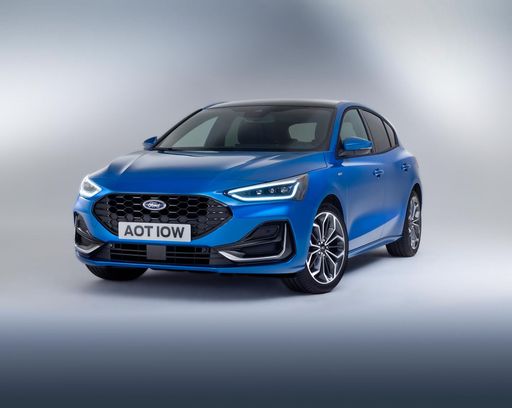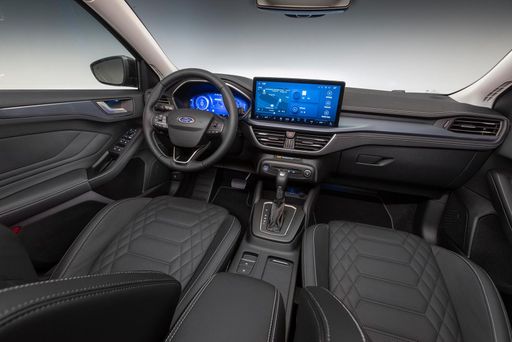Ford Focus vs Hyundai IONIQ 9 – Which car suits you better?
Compare performance, boot capacity, efficiency and price at a glance.
Find out which car is the better choice for you – Ford Focus or Hyundai IONIQ 9?
Costs and Efficiency:
When it comes to price and running costs, the biggest differences usually appear. This is often where you see which car fits your budget better in the long run.
Ford Focus has a significantly advantage in terms of price – it starts at 27500 £, while the Hyundai IONIQ 9 costs 58700 £. That’s a price difference of around 31200 £.
Engine and Performance:
Power, torque and acceleration say a lot about how a car feels on the road. This is where you see which model delivers more driving dynamics.
When it comes to engine power, the Hyundai IONIQ 9 has a evident edge – offering 428 HP compared to 280 HP. That’s roughly 148 HP more horsepower.
In acceleration from 0 to 100 km/h, the Hyundai IONIQ 9 is minimal quicker – completing the sprint in 5.20 s, while the Ford Focus takes 5.70 s. That’s about 0.50 s faster.
In terms of top speed, the Ford Focus performs somewhat better – reaching 250 km/h, while the Hyundai IONIQ 9 tops out at 200 km/h. The difference is around 50 km/h.
There’s also a difference in torque: Hyundai IONIQ 9 pulls distinct stronger with 700 Nm compared to 420 Nm. That’s about 280 Nm difference.
Space and Everyday Use:
Cabin size, boot volume and payload all play a role in everyday practicality. Here, comfort and flexibility make the difference.
Seats: Hyundai IONIQ 9 offers distinct more seating capacity – 7 vs 5.
In curb weight, Ford Focus is convincingly lighter – 1330 kg compared to 2594 kg. The difference is around 1264 kg.
In terms of boot space, the Ford Focus offers somewhat more room – 392 L compared to 338 L. That’s a difference of about 54 L.
In maximum load capacity, the Hyundai IONIQ 9 performs convincingly better – up to 2419 L, which is about 1065 L more than the Ford Focus.
When it comes to payload, Hyundai IONIQ 9 a bit takes the win – 643 kg compared to 560 kg. That’s a difference of about 83 kg.
Who wins the race?
The Ford Focus proves to be slightly ahead and therefore becomes our DriveDuel Champion!
Ford Focus is the better all-rounder in this comparison.
 @ focus.fordpresskits.com
@ focus.fordpresskits.com
Ford Focus
Ford Focus
The Ford Focus is celebrated for its agile handling and stylish design, making it a popular choice among hatchback enthusiasts. Its well-crafted interior offers a comfortable driving experience with intuitive technology features. Whether navigating city streets or cruising on the motorway, the Ford Focus delivers a balanced drive with impressive efficiency.
details @ focus.fordpresskits.com
@ focus.fordpresskits.com
 @ focus.fordpresskits.com
@ focus.fordpresskits.com
 @ focus.fordpresskits.com
@ focus.fordpresskits.com
Hyundai IONIQ 9
The Hyundai IONIQ 9 is a bold step forward in the automotive world, combining cutting-edge electric technology with a sleek and modern design. This model stands out with its spacious interior and advanced features, ensuring both comfort and convenience for drivers and passengers alike. As Hyundai pushes the envelope in eco-friendly innovation, the IONIQ 9 represents the future of sustainable driving with its impressive range and performance capabilities.
details
 @ focus.fordpresskits.com
@ focus.fordpresskits.com
|
|
|
|
|
Costs and Consumption |
|
|---|---|
|
Price
27500 - 42700 £
|
Price
58700 - 74400 £
|
|
Consumption L/100km
4.9 - 8 L
|
Consumption L/100km
-
|
|
Consumption kWh/100km
-
|
Consumption kWh/100km
19.9 - 20.6 kWh
|
|
Electric Range
-
|
Electric Range
600 - 620 km
|
|
Battery Capacity
-
|
Battery Capacity
110 kWh
|
|
co2
117 - 183 g/km
|
co2
0 g/km
|
|
Fuel tank capacity
52 L
|
Fuel tank capacity
-
|
Dimensions and Body |
|
|---|---|
|
Body Type
Hatchback
|
Body Type
SUV
|
|
Seats
5
|
Seats
7
|
|
Doors
5
|
Doors
5
|
|
Curb weight
1330 - 1529 kg
|
Curb weight
2594 - 2689 kg
|
|
Trunk capacity
392 L
|
Trunk capacity
338 L
|
|
Length
4382 - 4397 mm
|
Length
5060 mm
|
|
Width
1825 - 1844 mm
|
Width
1980 mm
|
|
Height
1438 - 1482 mm
|
Height
1790 mm
|
|
Max trunk capacity
1354 L
|
Max trunk capacity
2419 L
|
|
Payload
495 - 560 kg
|
Payload
586 - 643 kg
|
Engine and Performance |
|
|---|---|
|
Engine Type
Petrol MHEV, Diesel, Petrol
|
Engine Type
Electric
|
|
Transmission
Manuel, Automatic
|
Transmission
Automatic
|
|
Transmission Detail
Manual Gearbox, Dual-Clutch Automatic, Automatic Gearbox
|
Transmission Detail
Reduction Gearbox
|
|
Drive Type
Front-Wheel Drive
|
Drive Type
Rear-Wheel Drive, All-Wheel Drive
|
|
Power HP
115 - 280 HP
|
Power HP
218 - 428 HP
|
|
Acceleration 0-100km/h
5.7 - 11.8 s
|
Acceleration 0-100km/h
5.2 - 9.4 s
|
|
Max Speed
186 - 250 km/h
|
Max Speed
190 - 200 km/h
|
|
Torque
170 - 420 Nm
|
Torque
350 - 700 Nm
|
|
Number of Cylinders
3 - 4
|
Number of Cylinders
-
|
|
Power kW
85 - 206 kW
|
Power kW
160 - 315 kW
|
|
Engine capacity
999 - 2261 cm3
|
Engine capacity
-
|
General |
|
|---|---|
|
Model Year
2022 - 2024
|
Model Year
2025
|
|
CO2 Efficiency Class
D, G
|
CO2 Efficiency Class
A
|
|
Brand
Ford
|
Brand
Hyundai
|
What drive types are available for the Ford Focus?
Available configurations include Front-Wheel Drive.
The prices and data displayed are estimates based on German list prices and may vary by country. This information is not legally binding.
